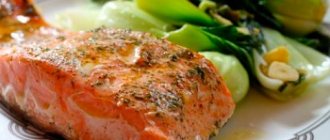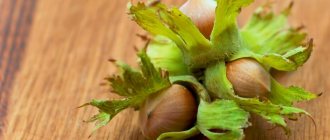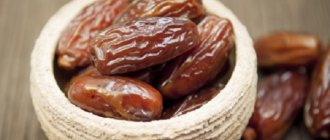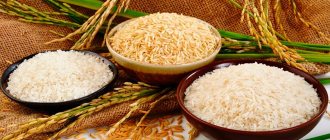How many calories are in different varieties of persimmon and is it possible to gain weight by eating the fruit daily? The beneficial properties of persimmon, composition and glycemic index allow the fruit to easily displace other products that have dietary properties from the list of low-calorie foods. A diet that includes this fruit is especially effective for accelerated weight loss and does not cause harm to health.
Dear readers, we invite you to SUBSCRIBE TO OUR NEW CHANNEL about weight loss and a healthy lifestyle. Useful materials will be published several times a week!
How and where does persimmon grow?
Persimmon grows in warm countries: Spain, China, India, Turkey and others. It is known that its homeland is China, but this fruit has long been loved by residents of other countries. In Russia, fruits are sold that are grown in Abkhazia, Georgia or the Caucasus.
The taste of the fruit pulp is different - it all depends on the chosen variety, on what soil the shrub grew, as well as the temperature where the healthy berry was grown.
Many people are interested in the question of which family persimmon belongs to. This is a genus of tropical or subtropical evergreen shrubs. The trees live for 500 years and have edible fruits. If you are wondering whether persimmon is a fruit or a berry, then it is classified as a berry, although in everyday life it is believed that it is a fruit.
What to do if persimmon is bitter?
The tannins already familiar to us are to blame. You can neutralize viscosity using a refrigerator. The berries can be frozen for several hours. Another option is to put persimmons in a bag with tomatoes or apples. The ethylene they release will help the berries ripen and get rid of excess viscosity.
If none of the options are suitable, you can simply stew the fruit; the berry will lose its astringency after heat treatment. In the Caucasus, this side dish is often used with veal. For example, you can make warm Italian pasta sauce.
Paste sauce for veal
Calorie content of persimmon
Persimmon kinglets have a low calorie content, so these juicy berries are a complete benefit in the diet even for people who want to lose weight. There are few calories in persimmon, and if you consume it in reasonable quantities, the berry will only be beneficial. But the product does not have a balance of proteins, fats and carbohydrates (carbohydrates are a priority), the fruit satisfies hunger due to the sugar content, and at the same time does not harm the body at all - again the benefits are obvious.
Fresh
The calorie content of fresh persimmon is 66 kilocalories. It contains 15 grams of carbohydrates, a small (in tenths) amount of protein and fat.
Dried
But in dried form, persimmons are much higher in calories - 274 kilocalories, because when they dry out, the moisture evaporates. The berry does not become less healthy; the dried product helps fight anemia and contains antioxidants that prevent aging of the body.
In frozen fruit
The healthy berry is not available all year round; persimmons are sometimes frozen. The energy value will be 66 kcal per 100 grams. The benefits of frozen persimmons are somewhat lower, but in any case, persimmons are rich in minerals, vitamins and microelements.
In what form and what varieties are best consumed?
Each berry variety has its own characteristics. Some are too sweet, others are too hard, others have a bitter aftertaste, and others can be stored for a long time. All of them are known and widely used by humans.
Fig persimmon
The benefits of fig persimmon are invaluable. Harm to humans is minimal. The negative impact primarily comes from overeating the product. Fig persimmon is one of the most popular berries for preparing and storing. This is the so-called black variety, which is especially tasty when fresh and dries well.
By the way, persimmon is a rare berry that practically does not lose its beneficial properties when dried.
The benefits and harms of persimmon seeds
For reference: persimmon seeds are a completely edible product. In the USA they were used by the Indians back in the Civil War. They ground them into powder and made pancakes. It was believed that they were more filling than those made from wheat flour.
In ground form, brewed in tea, the seeds are an excellent invigorating remedy, not inferior to coffee.
They are fried, just like pumpkin ones, but for some reason this is not customary in our country.
How to dry persimmons correctly?
The Japanese call dry persimmon natural candy. It is usually brewed into tea or used in making compotes. A big plus is that this kind of berry can be stored for many months. The benefits and harms of dried persimmons are relative.
The drying process is simple: Wash the berries, cut them crosswise into rings. Place on a sheet in the oven and dry for 8-10 hours at a constant temperature of 60 degrees. A gas stove may not cope with the task, since it is very important to maintain this temperature at all times. It is better to take the hardest fruits, but not overripe ones.
Dried persimmon
Such persimmons store well; they can be used as an independent delicacy or soaked to prepare filling for pies, preserves or jams.
Features of dried persimmons
The process of preparing dried persimmons is more labor-intensive. The berries need to be scalded with boiling water, peeled, carefully threaded and hung in a place where there is access to oxygen, but there is no direct sunlight.
Dried persimmon
After about a couple of weeks, the berries can be picked. The white coating on the surface of the berries is sugar.
Persimmon "Korolek" - health benefits and harm
This variety is the best for drying and heat treatment. There are no seeds in it. Jams are often made from this variety. “Korolek” is also popular in winemaking. There is no harm from figs, unless you overdo it with alcohol. In some cases, this variety can cause diarrhea, as this variety is the richest in tannin.
Black sapota
The best option if there are people with colds in the house. It helps to provide a surge of strength and vigor if a person refuses to eat. Just a couple of spoons of pulp is enough, and the patient’s strength returns.
"Black Sapota"
A more pronounced effect will be if you wash down the spoons with an infusion of brewed rose hips and honey. The liquid will provide the necessary relief if there is a fever, and the ripe fruit will help reduce weakness.
However, it should be remembered that persimmons should not be mixed with milk, because tannins do not combine with milk ingredients. This combination can cause spasms in the intestines.
Persimmon chemical composition
The nutritional value of persimmon is 66 kcal, which is not enough, despite the sweet taste of this berry. The fruits are healthy due to the fact that they have a high content of vitamins and minerals. Let's look at them in more detail:
- ascorbic acid;
- pantothenic acid;
- beta-cryptoxanthin;
- carotenoids;
- beta-carotene;
- biotin;
- lutein;
- zeaxanthin.
How much sugar is in persimmons and can diabetics eat them? The glycemic index of the fruit is 50, as is the carbohydrate content. Therefore, if you suffer from diabetes and want to protect yourself from surges in blood sugar, it is better to abstain from this fruit, or eat in very small quantities.
Persimmon at home from seed
For those who want to provide themselves with juicy and sweet fruits at any time of the year, you can think about growing persimmons on the windowsill. However, you should understand that you will have to wait five years before the first “harvests”. This is especially true for “stone” varieties, i.e. not vaccinated.
Pros of growing persimmons at home:
- Persimmon does not require special care.
- This is a perennial plant.
Minuses:
- The plant requires space, depending on the variety it can grow up to 10-15 meters.
- Requires constant humidity and light.
- Like all perennial plants, they shed their leaves in the winter.
.
Conclusions : It makes sense to grow it for the garden. Or for an experiment.
If you decide to grow a tree from a seed, the quality of the seeds is of utmost importance. This issue must be approached thoroughly - after all, the fruits will delight the owner of the house for many years. Usually Russians choose Korolek.
Useful properties and uses of persimmon
The fact that the product has beneficial properties becomes clear from the chemical composition of the berry. Let's take a closer look at what organs and systems this berry affects.
Heart
Has a beneficial effect on the cardiovascular system. Cardiologists say that if you are predisposed to heart disease, the fruit will be useful. Avoid serious diseases - strokes, heart attacks. In this area, the medicinal properties of persimmon are difficult to deny.
Eyes
Vitamin A is contained in large quantities - this is evidenced by its orange color. The fruit is also beneficial for the eye system if a person spends a lot of time in front of a computer monitor, since retinol (vitamin A) promotes the production of tears, which are responsible for moisturizing the eye socket.
Oral cavity
Fruits contain calcium, an element responsible for normal bone function. To prevent bleeding gums, stomatitis, caries and other unpleasant diseases of the oral cavity, you need to eat healthy berries.
Gastrointestinal tract
Thanks to fiber, it normalizes the functioning of the duodenum, and therefore stabilizes the stool. Regular consumption of fruits helps remove waste and toxins from the body. Pectin kills pathogens. The astringent fibers of healthy persimmons have a beneficial effect on the gastric mucosa, preventing gastritis and ulcers.
Endocrine system
How is persimmon useful and what does it treat for endocrine disorders? If you have problems with the thyroid gland, there is a lack of iodine in the body. Persimmon contains this element, so the fruit is useful for iodine deficiency. If you eat fruits regularly, the functioning of the thyroid gland is normalized. This is a good prevention of hypothyroidism (lack of thyroid hormones).
urinary system
Magnesium, as well as potassium, are precisely the elements that are necessary for the normal functioning of the genitourinary system. By consuming persimmon, you can reduce the risk of kidney stones and remove excess salt, thereby reducing swelling. If a person does not have enough magnesium in the body, this leads not only to dehydration, but also to problems with cardiovascular activity.
CNS
The fruit contains vitamins belonging to group B. They are responsible for good mood and the production of endorphins. You need two small fruits daily to increase your performance and feel great. In cases of stress and excessive fatigue, the berry will be extremely useful.
Immunity
Due to the content of vitamin C, it has the ability to protect against viral infections, influenza, and ARVI. In autumn and spring, it is worth eating these healthy fruits more often. For ENT diseases and pneumonia, you can also eat persimmon as it removes mucus from the bronchi. In some countries, people gargle with the juice of the berries, as the fruit is a powerful antiseptic. The beneficial properties of persimmon in the treatment of viral diseases were noted even by doctors.
Circulatory system
Persimmon is useful for anemia, if there is not enough iron in the body. Helps cleanse and thin the blood, produce red blood cells, and also saturates tissues with oxygen. Due to this, a person’s immunity increases, blood pressure normalizes, and metabolism accelerates.
It is worth remembering that for type 2 diabetes, persimmons are not so beneficial. This is due to the fact that it contains a lot of sugars, which provoke spikes in blood sugar.
The benefits of persimmon for women
Women are recommended to regularly consume persimmons, and not only to have beautiful skin and hair. Due to the content of microelements and vitamins, the benefits of persimmon for a woman’s body are invaluable:
- When dieting, nutrition is usually unbalanced, and the body may lack a large amount of nutrients. One piece a day covers the lack of essential substances to maintain normal working capacity and well-being.
- During menopause, women suffer from unpleasant symptoms - mood swings, hot flashes. The beneficial fruits of persimmon contain vitamin B, which normalizes these problems.
- The elements will also help eliminate pain during menstruation - both girls and women suffer from it. During menstruation, it is important to eat persimmon, because it contains potassium, magnesium, controls the volume of blood released, and helps the body maintain normal hemoglobin levels. It also prevents the occurrence of gynecological diseases.
- Women are more susceptible to pressure surges than men. If you eat healthy berries every day, they can be avoided.
- The product is used if you want to keep your hair healthy - not only internally, but also externally. There are many recipes for hair masks with the addition of this useful product.
When losing weight, you can eat the fruit because fiber helps normalize intestinal motility. Keep in mind that the product contains a large amount of sugars, so if you consume persimmons excessively, the weight loss process will slow down.
The benefits of persimmon for pregnant women
Doctors prohibit the use of medications when carrying a child, as they will harm the unborn baby. The sunny fruit will help protect yourself from viral diseases, prevent anemia, and strengthen your immune system.
Benefits for men
Persimmon - prevention of prostate diseases, the berry improves potency. If a man is planning to conceive a child, it is worth including in the diet, since special elements can increase the number of sperm and improve their quality.
Prostate adenoma is a disease that is provoked by surges in prolactin in the blood. The benefit of persimmon is that it reduces the synthesis of this enzyme, preventing the development of a dangerous disease.
The healthy fruit increases physical endurance, normalizes cardiovascular activity, and increases performance - these are the key factors for a healthy and successful man. Sharon varieties are especially healthy and tasty - they are common in our region.
At what age can persimmon be given to children?
In the case of introducing persimmons into a child’s diet, the following principle works: “The later, the better.” It is strictly not recommended to give this fruit to children under three or four years of age, since during this period the digestive system is quite weak and it is too easy to harm it. Since this fruit also contains astringents, which help remove toxins, it is useful for adults, but can be dangerous for the health of a child.
However, this fruit rarely causes allergies, so starting from the age of four (or better yet, from five) years, it can already be given to children, of course, in small quantities.
You can give it either fresh or dried or dried. Can be used as a filling or ingredient in a dish.
The benefits and harms of persimmons for children
Children will like the taste of this fruit, and its benefits will ensure normal mental and physical development. But this fruit cannot be given to children. When tannin enters the stomach, it forms a sticky mixture, it becomes one lump, and can cause abdominal pain by slowing down the digestion and absorption of incoming food. Children over 6 years old should use with caution. Older children, from the age of 10, can be pampered with persimmons without fear - after all, they are so healthy.
How to plant?
First of all, the seed must be selected from a fruit that has just been eaten, preferably one that has not been frozen or overheated. Otherwise, you may not expect a harvest.
The next stage is preparing the seed for germination. To do this, it is placed in a humid environment for three to five days. Most often these are cotton pads soaked in water; the container is placed in a plastic bag.
Now it is important to plant the seed correctly. For planting, it is better to take at least three seeds. To do this, prepare the soil: To ordinary soil in the amount of 0.5 liters of container, add one tablespoon of vermiculite, mix. Place expanded clay scalded with boiling water on the bottom of the pot.
| Photo | Description of action |
| This is what sprouted persimmon seeds look like. | |
| Use a toothpick or wooden stick to prepare holes for planting. | |
| Place the seeds sprouted side down. | |
| Water and cover with film. | |
| We poke holes in the film. Place the form with the seeds in a warm place. | |
| After 10, maximum 15 days, a sprout will appear. It must be carefully removed from the peel using tweezers and tweezers. Here it is important to wait until the seed opens halfway. | |
| This is what the plant will look like in a month. |
Growing a persimmon from a seed on a windowsill is not so difficult; it is more difficult to wait for the first fruits. When you see that sprouts have appeared, the pot needs to be moved towards the light. This is what young persimmon shoots will look like in two months.
Young persimmon
From the seed to the fruit of the plant
Every day the plant will gain strength, it is important to remember that this plant is not an ornamental flower and requires space. During the first year, the tree must be replanted frequently; then its growth will noticeably decrease. When it reaches 1.5 meters, it can be pinched.
Harm of persimmon
Everything is healthy in moderation, and the harm of persimmon can also be felt. Many people are interested in the benefits and harms of persimmon peels. In some varieties it is eaten - the healthy peel contains vitamins. However, the skin can be tart, tough, and unpalatable.
It's better to eat only the pulp. But it is worth considering that the fruit contains dietary fiber, tannin, and saccharides. Therefore, when eating, it is advisable to take into account some of the characteristics of this fruit. You can't eat:
- people with a predisposition to obesity
- small children under 3 years old
- type 1 diabetes mellitus.
You cannot eat persimmons during the postoperative period on the gastrointestinal tract. During rehabilitation, you should adhere to a strict diet; if you violate it, adhesions may subsequently form on the tissues. If you are obese, do not abuse this product due to its high carbohydrate content. You should not eat persimmons during an exacerbation of pancreatitis due to the high fiber content, which is difficult to digest. In the future, you can eat the fruit only under the strict supervision of your doctor.
Use
How to choose
Naturally, before choosing a fruit, it is very advisable to clarify the characteristics of the variety you want to purchase.
But also, there are general signs by which you can recognize an excellent persimmon of any variety:
- its skin should be taut and slightly glossy;
- there should be no dents, cracks or suspicious, especially black spots;
- the sides of the fruit should be soft to the touch (but the king variety, when ripe, on the contrary, is still hard);
- the stalk and leaves should be dry and brown in color.
Acceptable daily allowance
From the point of view of nutritionists, one fruit per day is enough. You can, of course, eat a couple or 8-10 (and this is already more than 1 kg). If we are talking about a magnificent, rare season of this fruit or a fasting dietary day. But regularly eating it in large quantities is highly likely to result in problems with the gastrointestinal tract. But you can safely eat persimmons at night and at any time of the day.
How to prevent persimmons from “knitting”
As already mentioned, tannins provide a specific “astringent” effect to fruits. However, as they ripen, they lose their tanning properties. Moreover, the fruit must be perfectly ripe. And you can, of course, choose the varieties already mentioned above - Korolek and Sharon, they do not knit, even if they are a little unripe.
You can neutralize tannins by treating the fruit as follows:
- freeze for 8-16 hours, but you will have to accept that the pulp will become much softer;
- soak for 8-12 hours in warm (35-40°C) water, after making several punctures in the fruit with a toothpick;
- speed up ripening by placing persimmons in one paper bag with bananas or red apples - in a day or two all the fruits will ripen as needed.











